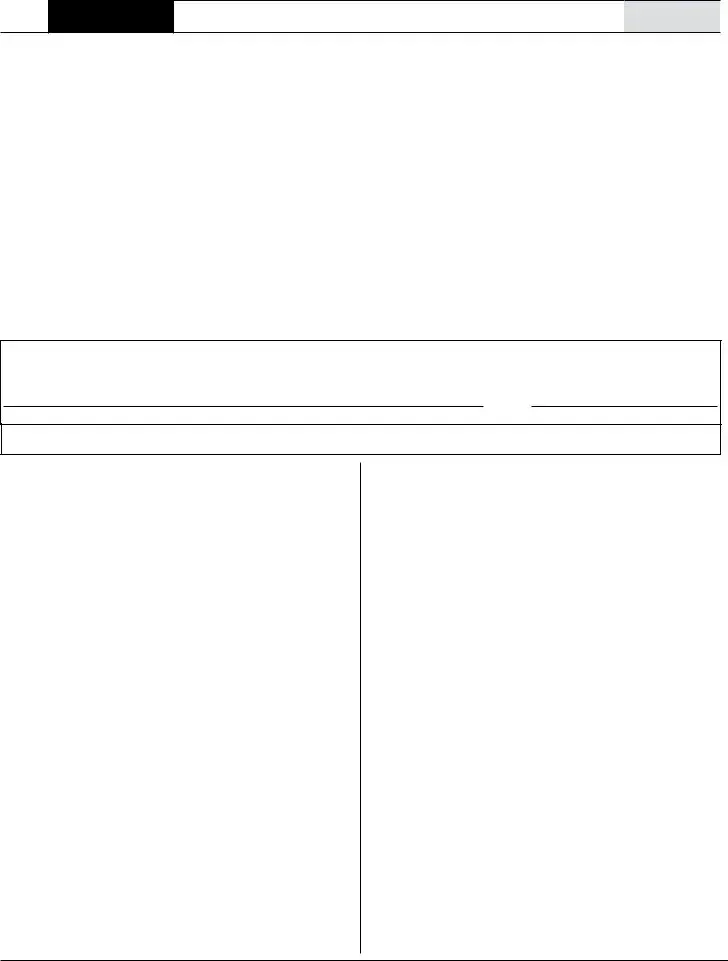The Arizona A4 form, titled "Employee’s Arizona Withholding Election," is closely related to the Federal W-4 form, "Employee's Withholding Certificate." Both forms serve the primary function of informing employers about the amount of tax to withhold from an employee's paycheck. The A4 form is specific to Arizona state tax, while the W-4 pertains to federal income tax. Employees fill out both forms to declare their withholding status, exemptions, and, if necessary, an additional amount they wish to have withheld from each paycheck. The specificity towards federal versus state tax responsibilities is the primary distinction between these two forms.
Another document akin to the Arizona A4 form is the California DE 4 form, "Employee's Withholding Allowance Certificate." Similar to the A4, the DE 4 is used by employees in California to determine state income tax withholdings. Employees use it to indicate their marital status, the number of allowances claimed, and any additional amount to be deducted. While both forms aim to customize the withholding process to better reflect the individual tax liabilities at the state level, they are tailored to the respective state tax codes and rates of Arizona and California.
The New York IT-2104 form, "Employee's Withholding Allowance Certificate," also shares similarities with Arizona's A4 form. It is designed for New Yorkers to specify their withholding preferences for state income tax. The IT-2104, like the A4, allows New York employees to choose their withholding rate based on allowances, marital status, and other income considerations. These forms both ensure that the amount of state income tax withheld from the employee's paycheck is aligned with their expected yearly tax liability, reflecting the adaptations made to accommodate state-specific tax structures.
The Form W-9, "Request for Taxpayer Identification Number and Certification," although primarily used for different purposes, shares a connectivity with the A4 in its role in the tax reporting and withholding process. The W-9 is often utilized by freelancers, independent contractors, and vendors to provide their taxpayer identification number to entities that will pay them. It ensures the correct reporting of income to the IRS. Both the W-9 and the A4 are pivotal in ensuring accurate tax documentation and withholding, even though the A4 is more focused on employment income and the W-9 caters to non-employee compensation.
Another document that parallels the Arizona A4 form is the W-2 form, "Wage and Tax Statement." The W-2 is issued by employers annually to report an employee's annual wages and taxes withheld to the IRS. While the A4 form is filled out by the employee to instruct the employer on how much to withhold, the information on the W-2 reflects the outcome of those instructions over the taxable year. Both documents are integral to the taxation process, ensuring employees' tax liabilities are met according to their reported earnings and chosen withholdings.
The 1099-MISC form, used to report various types of income outside regular wages, such as freelancer or contractor payments, shares a tangential relationship with the A4 form. While the 1099-MISC is for miscellaneous income and the responsibility of tax payments falls more directly on the recipient, the A4 deals with withholdings from a traditional employee's wages. Both documents, however, are vital for accurate income reporting and tax compliance, catering to different sources of income.
The IRS Form 1040, "U.S. Individual Income Tax Return," is another document related to the Arizona A4 form in the broader context of tax reporting and payment. The A4 form's selections influence the amount of state tax withheld, ultimately affecting the tax calculations filed on the Form 1040 for federal taxes. Essentially, while the A4 form pertains to planning and estimating state tax withholdings, the 1040 encompasses the broader scope of summarizing the individual’s total annual income, deductions, and credits to calculate federal tax liability.
The Oklahoma W-4P form, "Withholding Certificate for Pension or Annuity Payments," is an example of a specialized withholding form similar to the Arizona A4, but for pension or annuity payments rather than wages. Like the A4, it allows recipients to manage their tax withholdi.ng levels, focusing on that particular income source. Both forms empower taxpayers to tailor withholding rates to their anticipated tax obligations, although they cater to different types of income.
Georgia's G-4 form, "Employee's Withholding Allowance Certificate," serves a similar purpose as the Arizona A4 form, allowing employees to specify their withholding preferences for state income taxes. The process includes designation of allowances and additional withholding amounts, directly aligning with the A4's objectives. Despite being state-specific, both forms share the core function of personalizing the tax withholding process to better match the employee’s financial and tax situation.
Lastly, the IRS Form 8822, "Change of Address," while not directly related to tax withholding, connects to the A4 form through the importance of accurate and current information in the tax system. Form 8822 is used to notify the IRS of a change in address, ensuring that tax documents and communications are correctly directed. Similarly, updating the A4 form when personal or financial circumstances change is crucial for accurate state tax withholding. Both forms underscore the need for up-to-date information to avoid complications in tax responsibilities and refunds.
